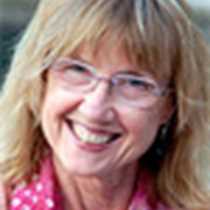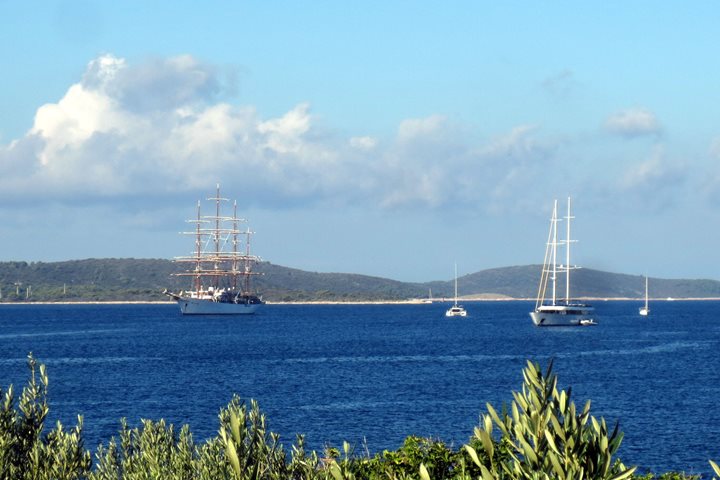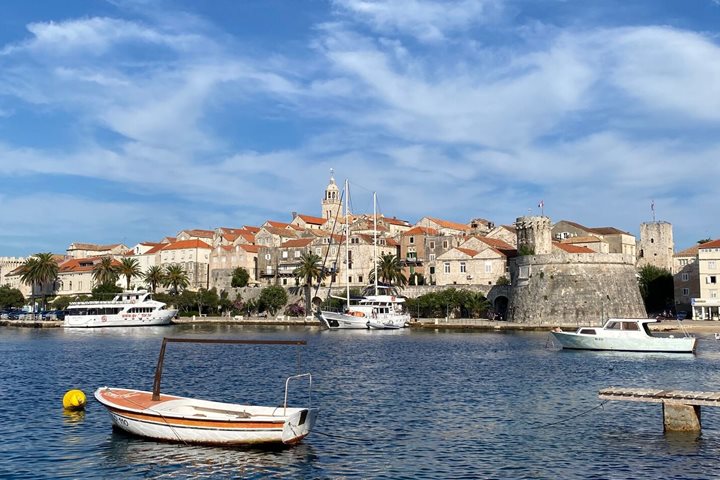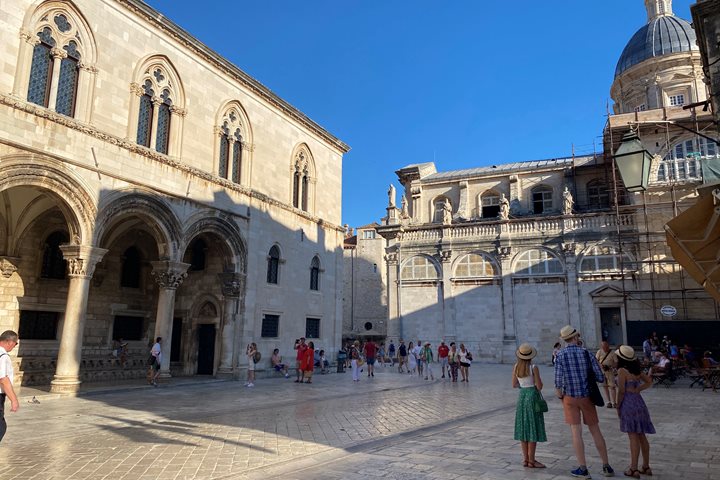The early risers, fortified with hot beverages and freshly baked pastries, were up on the monkey deck at 5:30 a.m. to watch the Sea Cloud take on the local pilot to navigate the 17-mile fjord-like passage of Boka Kotorska. Although it is known as “Kotorfjord” it is not formed by glaciers, but rather by the rapid uplift of the land due to the collision of tectonic plates and rivers cutting deep valleys and channels to form the long bay. Regardless this dramatic entrance surrounded by towering limestone mountains was our first introduction to the small country of Montenegro, independent for only the last 10 years.
Once anchored in the port of Kotor, we took buses to the small town of Perast, once home to prominent seafaring families and defenders of the narrow entrance to the inner bay of Kotor named Veriga for the chain that once blocked enemy ships from entering. A short boat ride delivered us to the charming chapel of Gospa od Skrpjela ‘Our Lady of the Rocks’. After the discovery of an icon of the Madonna and Child followed by some otherwise inexplicable miracles, the townspeople of Perast decided to build an island out of rocks, supplemented with shipwrecks, and provide a permanent home for the icon. The church is filled with personal votive offerings from grateful seafarers from all over the world as well as the locals. Back on shore we visited the more imposing Church of St. Nikolas and the small, but impressive Maritime Museum. We returned for an orientation walk through the picturesque old town of Kotor surprisingly uncrowded for this time of summer.
After a delicious lunch that included local fish we set off for a white-knuckle bus ride up Mt. Lovčen to the village of Njeguši. Our Montenegrin bus driver skillfully navigated the 25 switchbacks of this 19th century road originally built for horses by the Austro-Hungarians who controlled this coast after Napoleon’s defeat. There is a complex code of right of way when two vehicles meet as there is only room for one to pass. More than once we were grateful for the requirement that bus drivers be able to back up for half a mile in order to receive their license. Once in Njeguši there were rustic stands to explore with local handicrafts and food products, some of which we were able to sample in one of the local restaurants. A specialty of this village is the smoked pršut (the Montenegrin version of prosciutto) packed first in sea salt and then cured in the alternating currents of mountain and sea breezes specific to this village. We also had the opportunity to visit a private smokehouse and sample some of Boško’s rakija (a grappa-like spirit) before returning to port.
Once back on board Sea Cloud we feasted first on Kotor oysters and champagne, then a lavish buffet that included treats from the local farmers market: cheeses, charcuterie, honey, figs, cherries, and wild mountain strawberries. Although the roast suckling pig was delicious, it was no match for the exquisite black risotto with local squid. Desert was followed by a showing of the classic sailing documentary “Around Cape Horn.”









